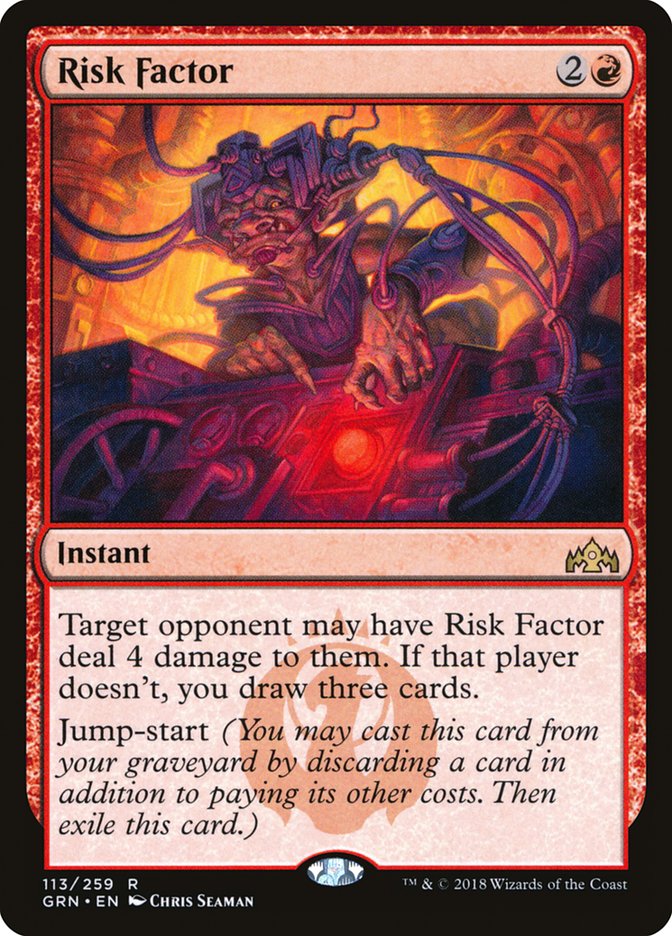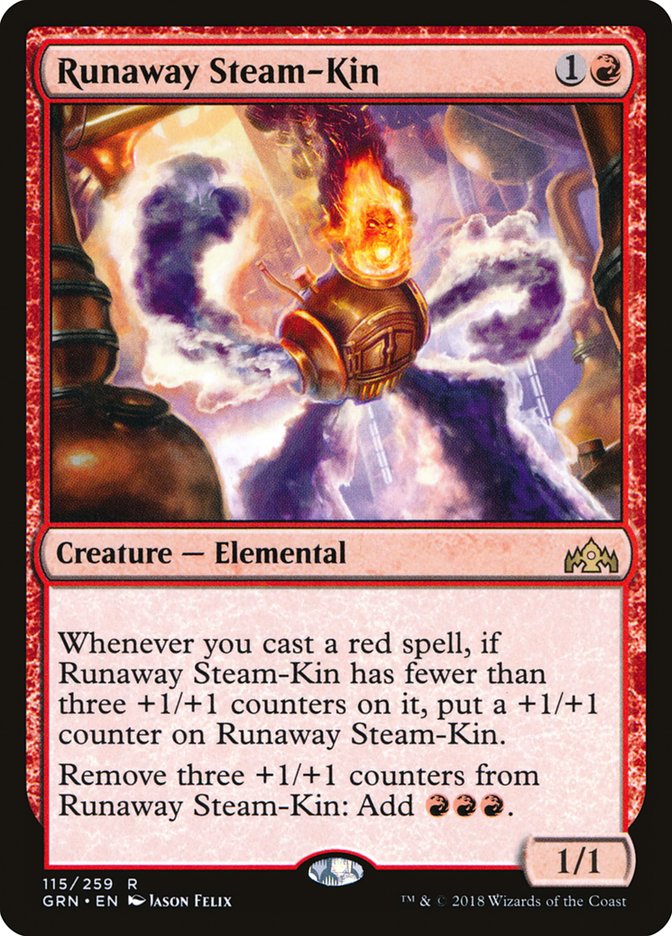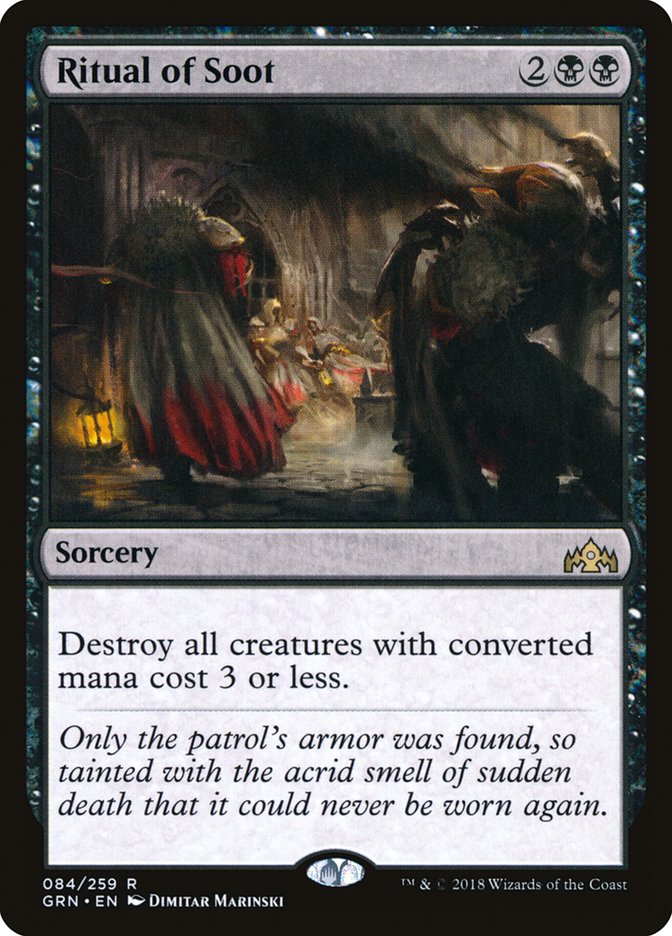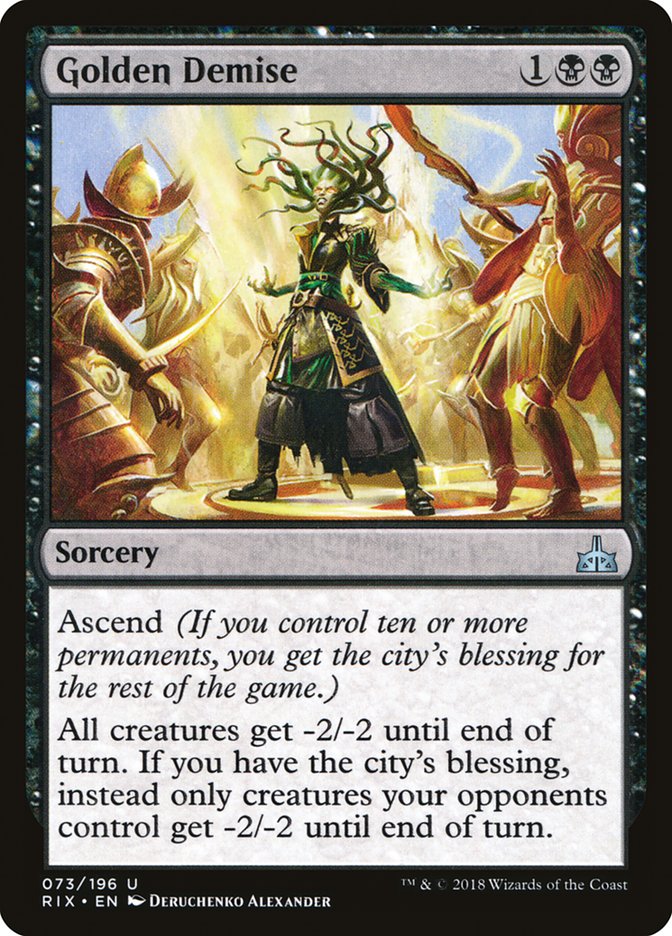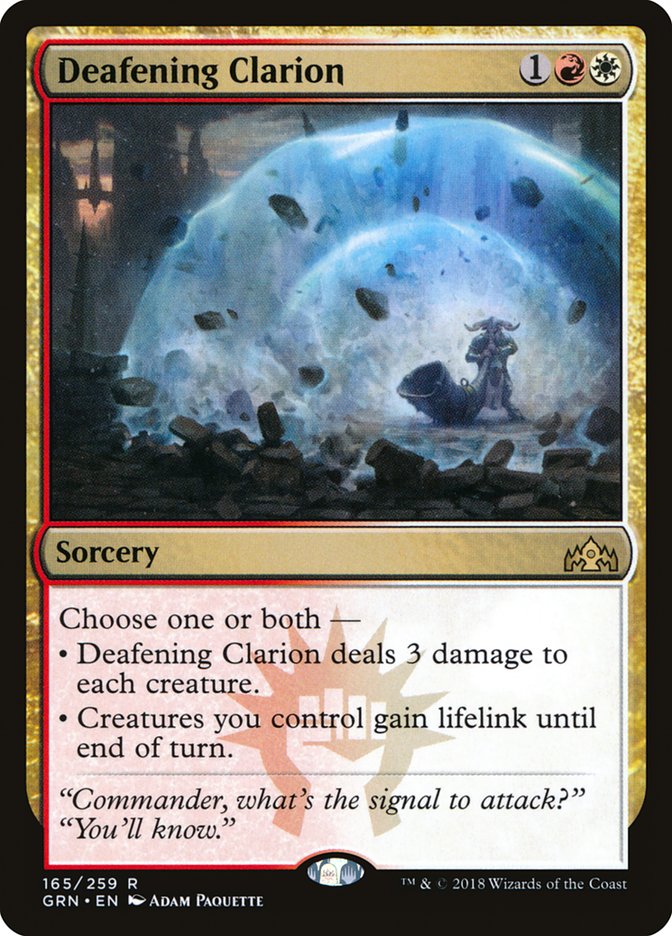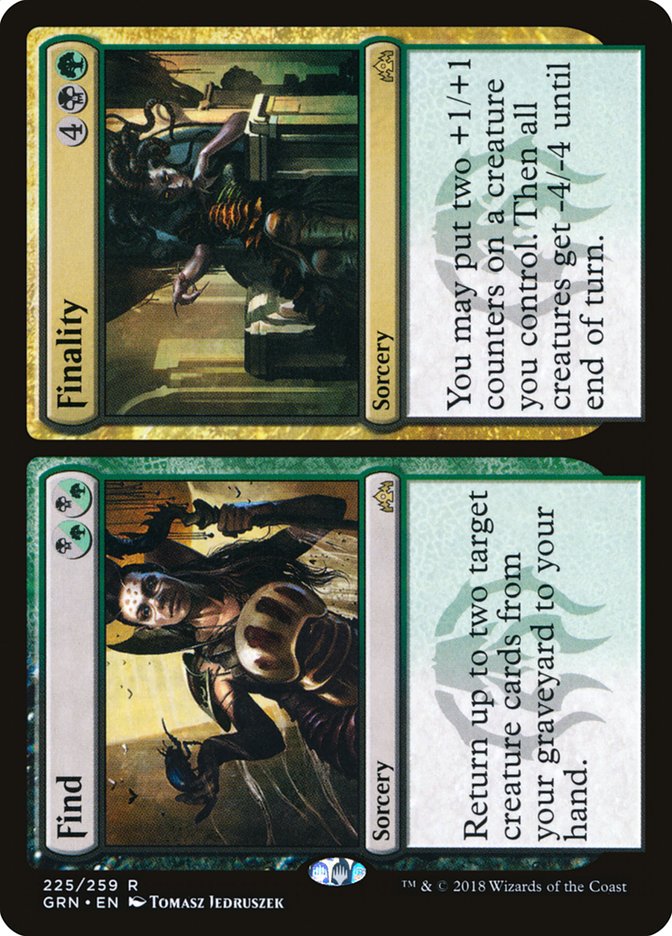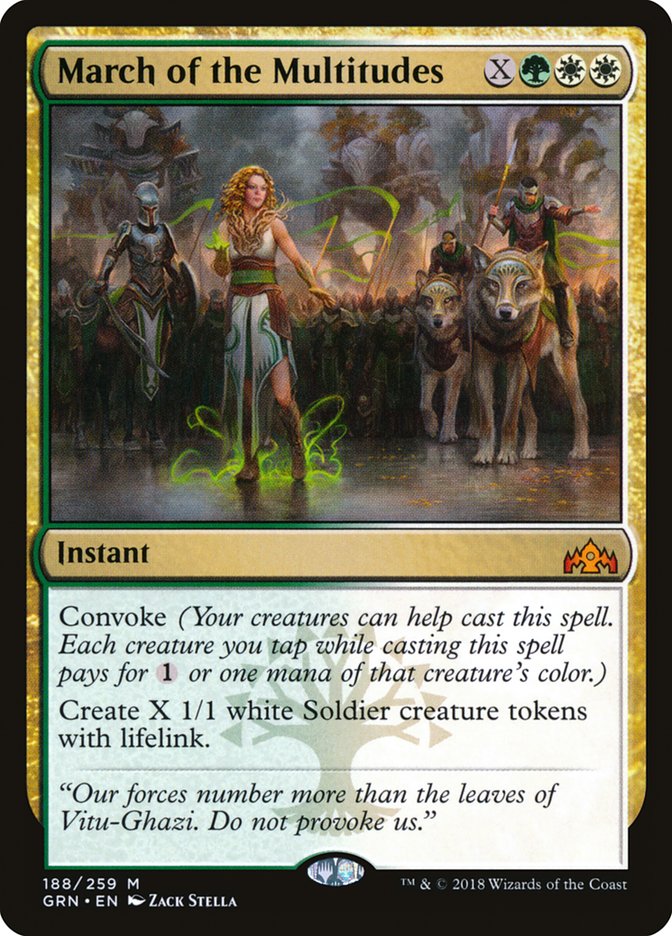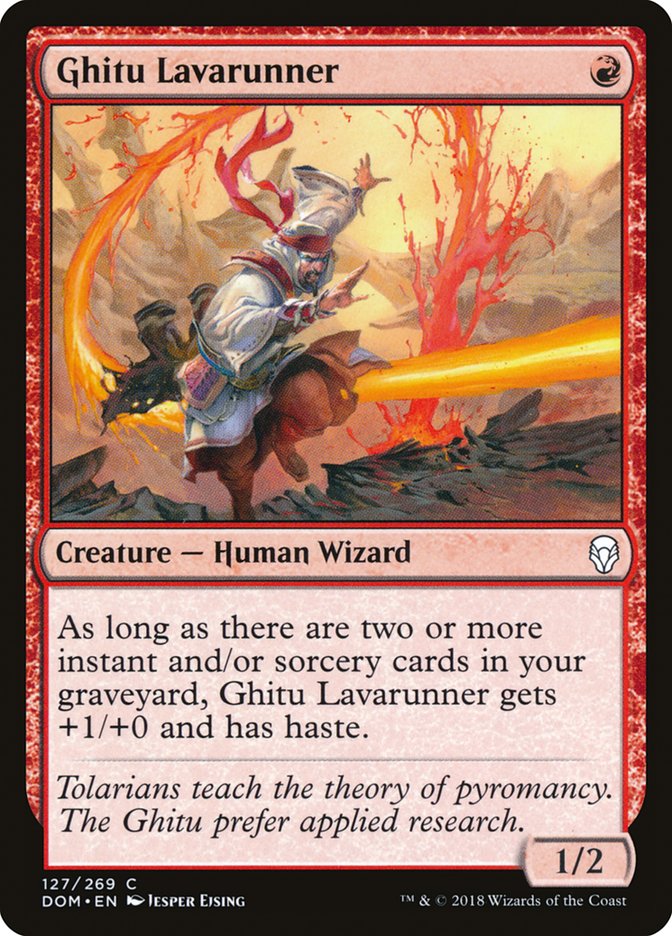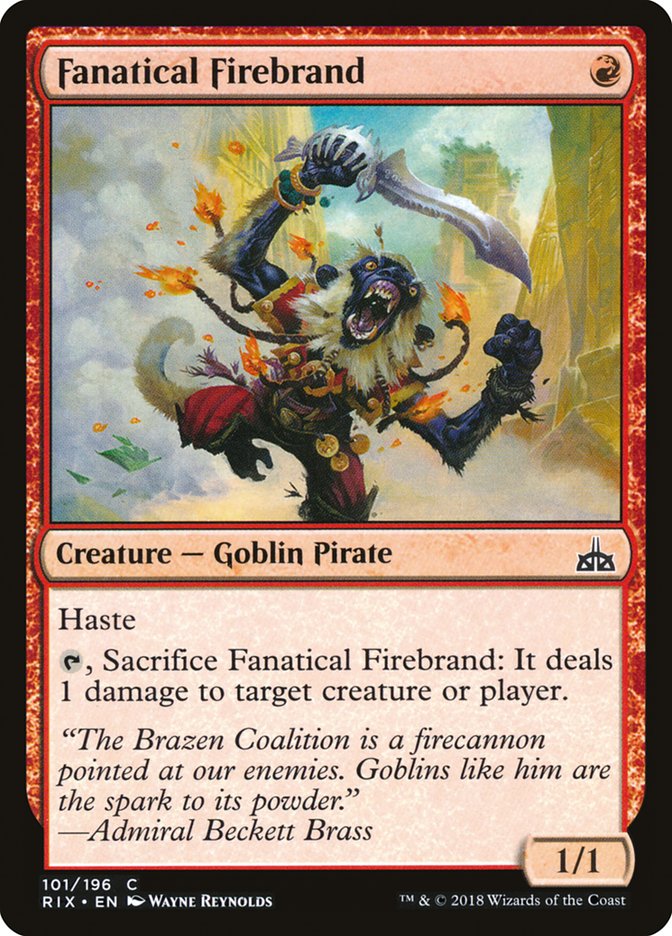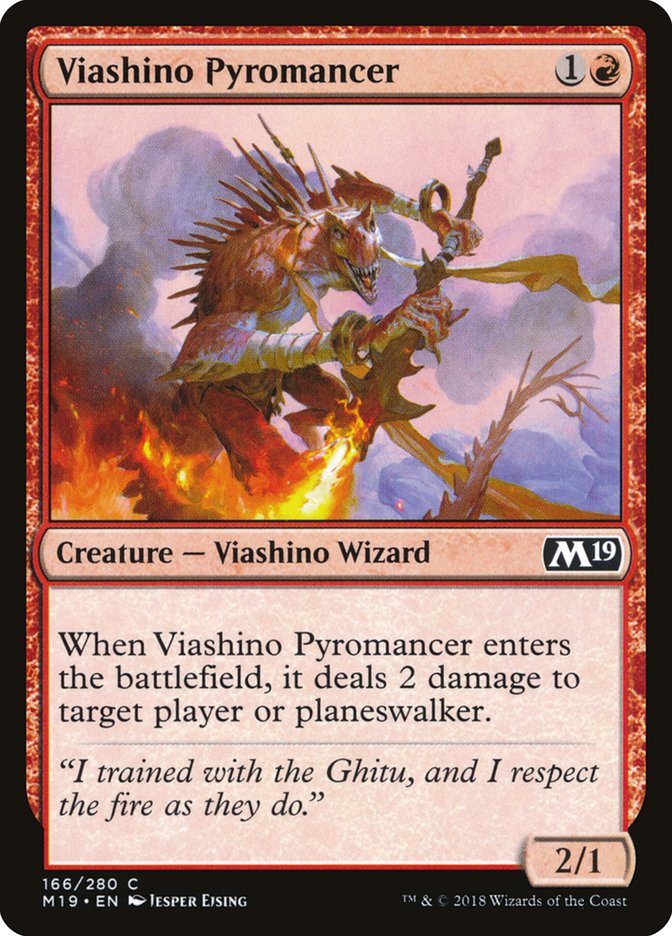The first batch of Guilds of Ravnica Standard results are in and
they are weird.
Mono-Red Aggro ran roughshod over the Standard seats of #SCGCOL. It was
the most popular deck on Day 2 of competition by a mile, with over twice as
many pilots as its nearest competitor, Selesnya Tokens. This impressive
performance culminated in three copies of Mono-Red Aggro making it to the
elimination rounds, outpacing the competition. It didn’t manage to take
home the trophy, but it’s hard to argue against Mono-Red Aggro being the
deck of the tournament.
But then you look over to the results of the Magic Online PTQ and wonder
how that event could possibly have happened the same weekend as the Open.
Mono-Red Aggro was nowhere to be seen at the PTQ. It wasn’t in the Top 8.
It wasn’t in the Top 16. You must go all the way down to 24th place before
you find a single solitary copy of the deck. It’s typical for Magic Online
and paper tournaments to have slightly different metagames, but this level of disparity? Unheard of.
In between these two tournaments results-wise we have the Standard Classic
that happened at #SCGCOL. There,
Mono-Red Aggro did okay. It placed one copy into the Top 8, with three more
copies lurking in the wings of the Top 16. Not the overwhelming performance
of Mono-Red Aggro in the Open, but neither is it the complete lack of
results the deck put up in the Magic Online PTQ.
So, where does the truth lie? Which tournament are we supposed to believe?
Is Mono-Red Aggro a menace or a nuisance, a tiger or a gnat? These are the
questions that this set of tournament results ask, and they aren’t easy to
answer.
The easy approach is to simply choose which tournament you believe. Maybe
you have great respect for the rigors of Magic Online and trust its results
blindly. Maybe you think the Open can be heavily discounted since it was a
team tournament and Standard wasn’t solely responsible. There’s merit to
these arguments, and they may get you closer to the truth, but they won’t
do anything to help you understand why these results happened.
For that, we’re going to have to dive a little deeper.
A Look at The Enemy
Let’s look at the enigma itself:
Creatures (22)
- 2 Rekindling Phoenix
- 4 Fanatical Firebrand
- 4 Ghitu Lavarunner
- 4 Goblin Chainwhirler
- 4 Viashino Pyromancer
- 4 Runaway Steam-Kin
Lands (22)
- 22 Mountain
Spells (16)

Let’s get something clear right off the bat: Runaway Steam-Kin is the
reason this deck exists.
Kaladesh
and Amonkhet are gone, and that means Hazoret the Fervent and
Bomat Courier are gone. Those were the big incentives to play Red Aggro in
the last Standard format, without them the available red cards look much
less appealing. Thankfully, Runaway Steam-Kin is here to pick up the slack
and is without a doubt our new incentive to play a Mono-Red Aggro deck.
You can see the importance of Runaway Steam-Kin in how these Mono-Red Aggro
decks are constructed. It’s only natural when building with an exciting new
card to put it in a shell that maximizes its strength. The Mono-Red Aggro
decks from the Open surrounded Runaway Steam-Kin with a pile of cheap red
spells, ensuring that the Steam-Kin would always have plenty of +1/+1
counters. At the same time, they’re built to make excellent use of the mana
Steam-Kin provides with Experimental Frenzy and Risk Factor. The two goals
of having cheap spells to put counters on Steam-Kin and having mana sinks
to make use of its mana generation are a bit contradictory, these Mono-Red
lists found a way to accomplish both at once.
But let’s put a pin on the importance of Runaway Steam-Kin for the moment.
We’ll get back to it later, but right now we need to talk about how to beat
this Mono-Red Aggro deck. The obvious hypothesis for how a deck could
dominate one tournament and not show-up to another is that the second
tournament adjusted to the deck and found a way to beat it. Magic Online
typically has a metagame a little ahead of the paper metagame due to how
easy it is to iterate and adapt on a digital platform, a fact that lends
itself to the support of this hypothesis. If we can show that Magic Online
found a way to beat Mono-Red Aggro, we’ll both make sense of last weekend’s
tournament results and have an excellent base of knowledge with which to
make predictions about the future of Mono-Red Aggro in this Standard
format.
So, how do we beat this Mono-Red Aggro deck? Good news on that front:
Mono-Red Aggro is an archetype with a long and storied career in the game
of Magic, which means that the strategies to beat it are time-tested and
proven. In broad terms, the two pieces of the puzzle are consistent early
interaction and the ability to close the door on their ability to win the
game quickly. All that’s left for us to do is analyze the specifics of this
Mono-Red Aggro deck and figure out exactly how each of those puzzle pieces
can be accomplished against this new breed of Mono-Red.
Closing The Door with Sweepers
When thinking about how to beat aggressive decks, we tend to hyper-focus on
how to interact with their aggression and ignore how to close the door on
them. There’s this idea that if you just manage to stay afloat, the rest
will sort itself out. After all, you’re generally going to be playing a
deck with a much higher average converted mana cost than the Mono-Red Aggro
deck, so if you just manage to take a sufficient quantity of turns, your
higher card quality will eventually convert to a win, right?
No, not right.
Yes, your cards might be better than your opponent’s pound for pound, but
your opponent entered the tournament with the full and complete
understanding that this was going to be the case against most of their
opponents. Lightning Strike you. Risk Factor, jump-start Risk Factor. Use
Experimental Frenzy to play three cards in a turn, every turn. The Mono-Red
Aggro decks have tons of plans to continue playing Magic even
after their early creatures are stymied. You need to do better than that.
The easiest and cleanest way to close the door on your opponent is to
reduce their life points to zero. Ending the game is the ultimate door
slam, leaving them no chance whatsoever to steal the game away from you.
You’ve already won it.
For most decks in Standard, ending the game is going to involve attacking.
Against Mono-Red Aggro, your creatures are serving a dual purpose: holding
back the hordes of small red creatures seeking your demise and lowering
your opponent’s life points. They can’t do both at once and that’s a
problem. Attacking before the battlefield is completely stable opens the
door wider in the name of winding up to close it, but you risk losing the
game in the narrow window you give them.
There’s lots of solutions to this problem, but the one the Magic Online PTQ
landed on is both relatively novel and surprisingly uniform in its
adoption: conditional sweepers.
I’m just going to say it: the sheer volume of sweepers in the winning lists
of the PTQ is wild. I can’t recall the last time where a major
tournament that had a Top 8 with five distinct archetypes that each
maindecked at least two sweepers. The other three decks put the sweepers in
the sideboard, but every single deck in the Top 8 had access to at least
three sweepers in their 75. This phenomena can’t even be traced back to the
flexibility of split cards, as only one of the decks played any copies of
Find.
Clearly, the Magic Online metagame has decided that sweeper effects are
good right now. Just look at this deck:
Creatures (22)
- 4 Adanto Vanguard
- 4 Knight of Grace
- 4 Lyra Dawnbringer
- 3 Shalai, Voice of Plenty
- 4 Resplendent Angel
- 3 Aurelia, Exemplar of Justice
Lands (25)
Spells (13)

This is the deck that really sells me on the premium being placed on
sweepers. It’s a creature deck for crying out loud, anaggressive creature deck. Its sweeper flat out kills twelve of its twenty-two creatures, not to mention every Knight
token made by a History of Benalia. It’s playing three copies of that
sweeper! Sure, you can pay four life to save your Adanto Vanguard. Yes,
you’re actively interested in the lifelink mode on Deafening Clarion in a
wide range of matchups thanks to Resplendent Angel. I still don’t buy that
this deck would touch Deafening Clarion with a ten-foot pole in a vacuum.
It’s playing it because it’s good in the format, and it’s good in the
format because it’s good against Mono-Red Aggro.
So, here’s how sweepers contribute to closing the door on the Mono-Red
Aggro deck: they let you attack. Earlier, I mentioned that your creatures
are serving in two roles, working both as your defense and your offense.
Defense takes priority, because offense takes time, but if you never start
attacking you’ll never finish attacking. Sweeper effects against this
incarnation of red free up your creatures from defense duty and are very
important in enabling you to turn the corner.
The reason that we’re seeing sweeper effects pop up against this version of
Mono-Red Aggro when they’ve never been this popular against Mono-Red before
is that the long-game plan of these decks is new. Thanks to Runaway
Steam-Kin, this new version of Mono-Red can depend on having access to lots
of mana in the mid-game despite only playing 22 lands. Because of this,
they can use Experimental Frenzy and Risk Factor to great effect,
guaranteeing a heavy card flow in the lategame. Their cards are worse, but
they’re going to get to play more of them.
What this ends up meaning is that this Mono-Red Aggro deck can keep
presenting a formidable battlefield no matter how consistently and well you
manage it. Against other Red Aggro decks, a few spot removal spells would
often be enough to keep their battlefield under control as you entered the
lategame, but that’s not the case now against this version that can
realistically deploy three creatures a turn multiple turns in a row no
matter how deep into the game you take them.
As a side note, the preponderance of sweepers in the PTQ Top 8 lists also
explains the lack of Selesnya Tokens in that Top 8. Selesnya Tokens was the
second-best performing deck at #SCGCOL, and its
lack of results in the PTQ was almost as confusing as that of Mono-Red
Aggro. Sweepers are certainly great against Selesnya Tokens as well as
Mono-Red Aggro and do a lot of work to keep both decks down. I don’t think
there’s a lot of value in discussing the chicken and egg problem of which
deck was the main reason for all these sweepers; they’re good against both
decks, and both decks suffer from their popularity.
Consistent Early Interaction
Closing the door is more important than we tend to give it credit for, but
that doesn’t diminish the importance of early interaction. Mono-Red Aggro
historically has two components: early-game creature aggression and
lategame reach. This has been the formula since the days of Sligh and this
incarnation is no exception. Like most Standard red decks, Mono-Red Aggro
is decidedly not a burn deck. It has enough reach to close out games after
strong starts, but not enough to take the opponent all the way from twenty
to zero without making use of the combat step at all. This means that the
focus of our early interaction needs to be on dealing with the creatures of
the Mono-Red Aggro deck.
The common thread tying the creatures of the Mono-Red Aggro deck together
is how cheap they are to cast. Sure, Max McVety’s list from the Open from
above included Rekindling Phoenix, but his adoption of that card is the
exception, not the rule. And even Max was only playing two copies, not
enough to change the fundamental dynamics of the deck. What we need to
focus on doing is stopping a bunch of one- and two-mana creatures in their
tracks.
Roughly speaking, there’s two main ways to deal with early aggression: spot
removal and early creatures of your own. When going down the spot removal
path, you really want pieces of removal that trade at mana parity with the
cheap red creatures. You aren’t going to beat a bunch of Raging Goblins
with a handful of Murders. Sadly, Fatal Push has left Standard, which makes
finding appropriately cheap removal to play a non-trivial proposition. Not
undoable mind you, but certainly not a given.
Still, the preferred option is going to play a bunch of early creatures of
your own, creatures that can block the Mono-Red creatures effectively. We
saw that earlier in the Boros Angels deck, but check out how that plan is
executed in this beauty:
Creatures (23)
- 4 Wildgrowth Walker
- 2 Merfolk Branchwalker
- 4 Seekers' Squire
- 4 Jadelight Ranger
- 3 Ravenous Chupacabra
- 1 Izoni, Thousand-Eyed
- 1 Golgari Findbroker
- 4 Knight of Autumn
Planeswalkers (2)
Lands (25)
Spells (10)

This list plays a full ten two-drops that all block the Mono-Red creatures
passably well and follows them up with eight three-drops to really close
the door on the aggressive red creatures. Ideally, turn 4 will be another
two two-drops, but if not there’s four good four-drop creatures, not to
mention four copies of Vraska’s Contempt to handle any pesky Runaway
Steam-Kins floating around. This deck looks like a nightmare for Mono-Red
Aggro to play against. There’s no way to consistently get through on the
ground, and the second a Finality gets cast the game is going to end in
short order.
Before moving on to the future of Mono-Red Aggro in the metagame, let’s
talk a little about the ‘consistent’ part of consistent early interaction.
I’ve glossed over it so far, but it’s incredibly important. Mono-Red Aggro
is built to come out of the gates fast and powerfully every game it plays.
This means that if you stumble, if your second land enters the battlefield
tapped, if you miss your third land drop, if you simply draw nothing to
play in the first two turns of the game, you will quickly find yourself
impossibly far behind. Mono-Red Aggro is the best in the business at
capitalizing on a stumble from the opposition.
The consequence of this fact is that the quantity of interaction that you
play and the strength of your manabase matter a ton. Magic players
have a bad habit of rounding percentages to things they shouldn’t. If
something is 70% to happen, we complain when it doesn’t. Sure, your 25 land
deck with seven two-drops should have something to play on turn 2,
but that doesn’t mean it will. The PTQ lists, especially the
Golgari Midrange decks, take this to heart and really overload on their
early game, and I adore them for it.
Mono-Red Aggro and the Standard Metagame Going Forward
So, where does this leave Mono-Red Aggro in the weeks to come of this
Standard format? Recall:
of the PTQ is wild.
Too wild, I think. I don’t think it’s possible for an equilibrium metagame
to exist where every top deck maindecks multiple sweeper effects. It’s just
too exploitable. It’s way too easy to build a deck that these conditional
sweepers do nothing against and beat up on all the midrange decks that came
prepared for Mono-Red Aggro and Selesnya Tokens. See:
Creatures (13)
- 1 Ravenous Chupacabra
- 3 Nicol Bolas, the Ravager
- 3 Doom Whisperer
- 2 Lazav, the Multifarious
- 4 Thief of Sanity
Lands (26)
Spells (21)

This Grixis Midrange deck plays well against all the conditional sweepers
seeing play. Sure, Thief of Sanity dies to a few things, but that’s about
it. Throw in Lazav, the Multifarious and the deck has six creatures
vulnerable to a Deafening Clarion. That’s not a big deal. Playing sweeper
effects in your deck is a real liability against this deck, and it’s no
surprise to me that this deck was able to make it all the way to the finals
of the PTQ by beating up on the decks gearing for Mono-Red Aggro. Of
course, the deck that it lost to in the finals was one of the three decks
in the Top 8 that played no maindeck sweepers. Coincidence? Doubt it.
That’s a quote from the very beginning of this article, and it’s a lie. Sure, Mono-Red Aggro wasn’t in the Top 16 of the PTQ, but you
can see the fingerprints of the dramatic effect it had on the format in
every single decklist that made the Top 8. Mono-Red Aggro didn’t fail to
crack the Top 8 because it wasn’t good enough, but rather because the
competitors in the PTQ were ready for the strategy.
All the things we’ve talked about that the PTQ lists did to beat Mono-Red
Aggro are extremely exploitable. Playing sweepers isn’t free. Playing huge
quantities of cheap value explore creatures isn’t free. There’s room in the
metagame for these strategies to be preyed on, and when those decks emerge
I expect that we will see a resurgence of Mono-Red Aggro. In my
article
last week, I talked about how the removal available in Guilds of Ravnica Standard lends itself to a cyclical metagame,
and I think we’re looking at the first stage in that cycle. First there was
Mono-Red Aggro, then there was Sweeper Midrange. Next comes Teferi, Hero of
Dominaria? Then Vivid Renewal Control? I can’t honestly tell you I know the
next stage of this metagame, but I know the one that comes after it:
Mono-Red Aggro.


